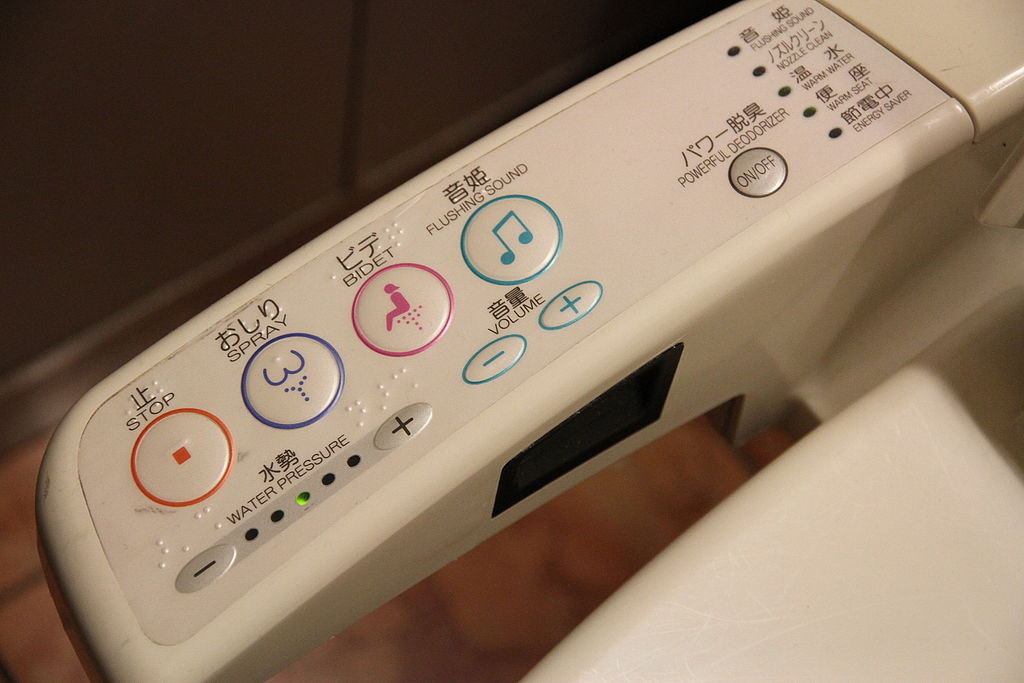One thing foreigners are often excited about when they come to Japan is using the Japanese toilets. Many have a range of features that makes the everyday experience of using the bathroom something of an adventure.
The following are some key things to know before you use a Japanese toilet to give you an idea of what to expect.
1. Traditional Japanese Toilets
The fancy modern toilets you find in Japan are actually Western style toilets with added features. Japan also has its traditional style of toilet called washiki. These don’t have a seat: you straddle the toilet and squat, making sure to face the dome-shaped splash guard. These toilets are becoming far less common, but you may still find them in some public restrooms.
Now we’ve covered washiki, let’s talk about the features on modern toilets.
2. Learn What the Buttons Mean
Don’t mess with the buttons on a toilet unless you are sitting and know what the buttons are for! Pushing things at random may lead to a surprise — ranging from a spray of water to making an emergency call (if you’re in a public restroom).
3. Heated Seats
Some toilets have heated seats, which make winter usage much more pleasant. They almost make getting out of bed in the morning when you live in a poorly-heated building bearable — almost. The most advanced models even turn the heated seat on automatically at times when the toilet learns about when you typically use it.
During the warmer months, you can typically switch off the heated seat function to save energy.
4. “Sound Princess”
Many toilets have a feature called “otohime,” which translates to “sound princess.” Activated using one of the buttons, it conceals the noises of bodily functions by broadcasting the sound of a toilet flushing through a small speaker system. This is sometimes an automatic feature.
5. Toilet Slippers
Historically in Japan, toilets were located outside the house. This led to the development of toilet slippers. The custom remains today — but you should never wear these slippers outside of the bathroom!
6. Wash Basin Placement
You may be surprised to see the wash basin set on top of the toilet water tank in some homes. This is actually a great way to save water, as you reuse the water for your next flush.
7. The Bidet Function
You’ll get the most out of Japanese toilets if you learn about the different bidet options. Most have an option for rear washing, but others also have for front washing. Sometimes, you can control the water pressure, position, and temperature to optimize your experience.
8. Flushing Paper
In Japan, you should always flush paper down the toilet. Toilet paper is required to dissolve within 100 seconds of being placed in water. For this reason, make sure you only use Japanese toilet paper and not foreign-bought paper or tissues to avoid clogging the toilet.
9. The Dryer Function
When the toilet has a dryer function, you don’t even need toilet paper. Locate the button for this feature to dry yourself with a warm, gentle breeze.
10. Drying Your Hands in Public Restrooms
It’s common for public restrooms to not have paper towels or hand dryers. Be prepared by keeping a handkerchief on you.
More on Japanese toilets:
How to Use a Squat Toilet with pictures!
Maya-Anaïs Yataghène from Paris, France, CC BY 2.0 <https://creativecommons.org/licenses/by/2.0>, via Wikimedia Commons

